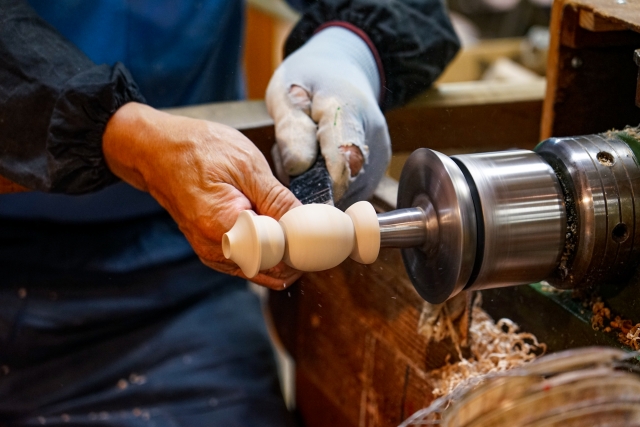
It’s been three days since I returned to Japan for a short stay. Despite predictions that a typhoon would hit the Kanto region on the day of my arrival, I was able to come to Japan without any issues.
This time, it’s been about four months since my last visit to Japan.
Compared to the previous time, I feel an even more hectic atmosphere. A sense of instability in various ways seems to be becoming more apparent, but perhaps it’s a necessary step as we pass through a period of transition.
The purpose of this visit is also to take care of what needs to be done in Japan in preparation for launching an arts and cultural exchange organization in New Zealand this year.
In this context, I found an article that reflects the purpose of my organization’s founding, so I’d like to share it here as I return to my roots once more.
In recent years, consumers around the world have started to feel tired of and question the mass-produced, impersonal products that flood the market. They are increasingly turning their attention to products with more meaning and a story behind them. This shift is particularly evident in the growing interest in the uniqueness, quality, and cultural value embodied in traditional crafts. The popularity of Japanese traditional crafts in the UK is a prime example of this global trend. There are various reasons why British consumers are captivated by Japanese traditional crafts, but at the core of this lies a deep empathy and cultural curiosity.
This growing interest is not merely a passing fad but contributes to deeper cultural exchange and understanding. The background behind the increasing attention toward Japanese traditional crafts, not only in the UK but globally, is a shift in consumer values. Concerns for the environment, sustainability, respect for handmade goods, and a desire for products with a story have heightened interest in traditional crafts. These values are especially strong among younger generations, who wish to have a positive impact on the world through their consumption choices.
A World Woven by Tradition: Cultural Exchange Through Crafts
In today’s society, where mass-produced goods are everywhere, people are increasingly seeking items that convey a sense of human warmth, quite the opposite of what we often encounter. I began to feel this way when I was confined at home during the COVID-19 pandemic.
Human relationships, too, are becoming more impersonal. The same goes for food.
While this may be the norm, and many people might think it’s fine, there are certainly those who question these trends and begin to seek something opposite to what is commonly presented.
That’s why I have high hopes for traditional Japanese arts and crafts. It’s not about money or fame; I am deeply drawn to the craftsmanship spirit of the Japanese people, who quietly create something they are genuinely satisfied with.
You can sense that spirit in the finished works. They are purely beautiful. Objects are not just objects.
Traditional crafts, in particular, allow one to experience their beauty through daily use, leading to a richer life.
The changes in consumer values described in this article, I believe, are natural tendencies as human beings.
In a nearby painting store in New Zealand, Japanese ukiyo-e (woodblock prints) are being sold. A large stack of prints that couldn’t be displayed was piled up on a table.
The washi paper is tattered and full of stains. While I understand the appeal of valuing old things and the feelings of consumers who seek to purchase them, I found it strange that these items, which would be very affordable in Japan (I’ve been taught how to distinguish the quality of ukiyo-e in Japan), were being sold at a high price.
Are the buyers truly understanding ukiyo-e? Or is it just being sold under the mistaken belief that its age alone makes it valuable as a commodity?
If items of real value are being sold overseas merely as objects, I feel as a Japanese person that something is wrong.
How do we convey the value of these items? That is a very important question. The true value of an object is only realized when the heart of the maker is purely conveyed to the final buyer.
This is one of the reasons I felt the need for an arts and cultural exchange organization abroad.

At the moment, I am still searching for the best approach. New Zealand tends to be perceived in Japan as a small country, often seen as an appendage to Australia.
More than a year ago, I consulted with a Japanese governmental institution, but it ended with a laugh and a comment like, “We can feel your enthusiasm, but…” on the other end of the phone. There was nothing I could do.
This time, I plan to take a step forward and consult with an organization that specializes in the trade of traditional crafts.
Although New Zealand’s small population may mean it lacks the impact of cities like New York or Paris for Japan, there are things that only Japanese people living abroad can do, even if on a small scale.
It may be a small thing, but I want to do what is possible within our means as an organization, without overextending.
The true purpose of running an organization overseas is not simply to have more foreigners learn about Japanese traditional culture. Of course, that is one goal, but the real objective lies beyond that.
The true purpose is to have Japanese people themselves realize the beauty of their own traditional culture.
In many fields, Japan is incredibly sophisticated on a global scale. There are many talented individuals in Japan. I realized this after viewing Japan from the outside.
Personally, I had no interest in traditional culture when I was living in Japan. This was the case with the tea ceremony, for example. My mother would sometimes perform tea ceremonies at home, but I only sat in seiza (traditional Japanese sitting posture) because I knew I’d get to eat sweets, and honestly, I found the sitting itself bothersome.
When we step outside Japan, we realize that what was taken for granted in Japan isn’t necessarily so.
There are talents in Japan that are overlooked, only to be recognized once they step outside the country. Traditional culture might be the same. By being noticed overseas and by foreigners, the value of these traditions could come full circle and finally be acknowledged in Japan. If I could help facilitate that process even a little, the purpose of the organization would be fulfilled.
During this stay in Japan, I will be preparing to achieve this goal. I have appointments to meet with several people, and I’m very excited to see how things will progress.